Collaborative workspaces are a hit. They’re proving so popular that, if we’re not careful, all the entrepreneurs landing in them and casual-chatting over non-stop coffee may come full circle and form what the Dutch like to call “companies.”
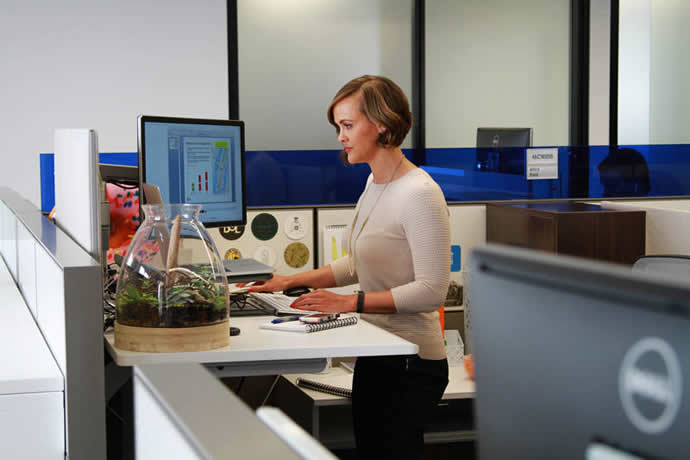
More than one enterprise is taking full advantage. As reported in March by The Wall Street Journal, New York–based WeWork — an office-sharing firm with spaces in more than 20 cities in North America, Europe and Israel — just entered the rarefied company of $10-billion-plus firms such as SpaceX, Uber and Airbnb by closing a round of funding that took its value to $16 billion.
The firm’s name conjures a spirit of collective aspiration to make “a life and not just a living,” while simultaneously functioning as a parry — “Hey, we do work” — to skeptics who might wonder just how much actual work is accomplished at such dens of togetherness. WeWork recently opened outposts in Berlin, Montreal, Toronto and Miami, and has even launched “WeLive,” apartment complexes that come complete with, as Fortune puts it, “beer and yoga.”
The company wants to eventually open 1,000 locations, and have a portfolio of over 80 million sq. ft. by 2020. They’re not alone in explosive growth: SOHO 3Q, a division of Chinese office space provider SOHO that aims to appeal to the “mobile generation,” planned to expand from 1,500 desks to more than 10,000 between summer 2015 and year’s end.
Some companies have attempted to internalize the co-working gospel, and get sales mileage for their solution at the same time. Such is the case at JLL, which followed up its recent “Fully Engaged” workplace report by implementing some of the report’s findings at its own HQ in Chicago’s Aon Center.
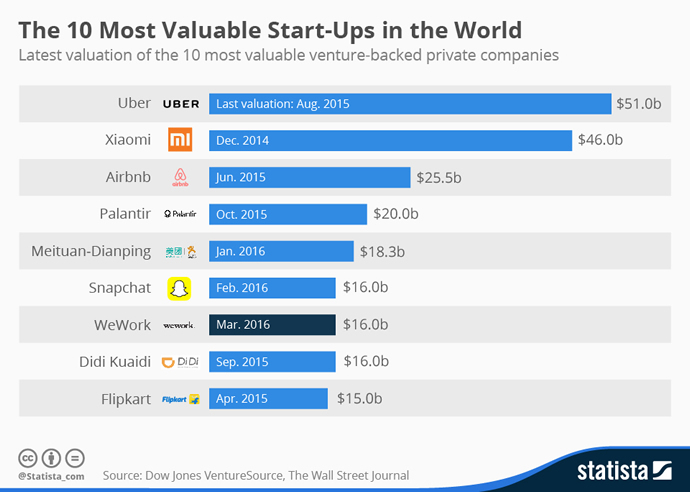
After a process that involved their input, JLL employees are now moving into two “reimagined” floors, as JLL just completed the first phase of a total office renovation that will be complete a year from now. The redesign covers 200,000 sq. ft. on six floors and impacts 1,500 employees.
“Early in the process, JLL found through a survey of all employees at its office in Aon Center that they thought they were mobile 30 percent of the time — but seat sensor data confirmed they spent nearly half of their days away from their desks,” said an April 4 release from JLL. “Additionally, almost 25 percent said they wanted more opportunities to interact with colleagues in other business teams. JLL leaders combined this data with input from focus groups to work with Gensler, its architectural partner, to design a cutting-edge office that would satisfy the four generations of employees who work there.”
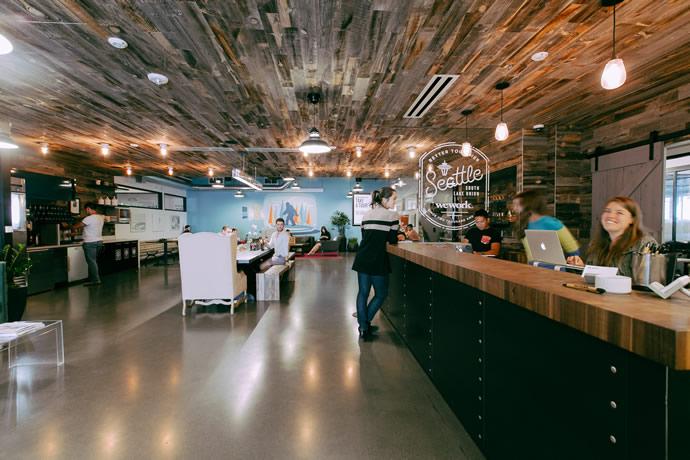
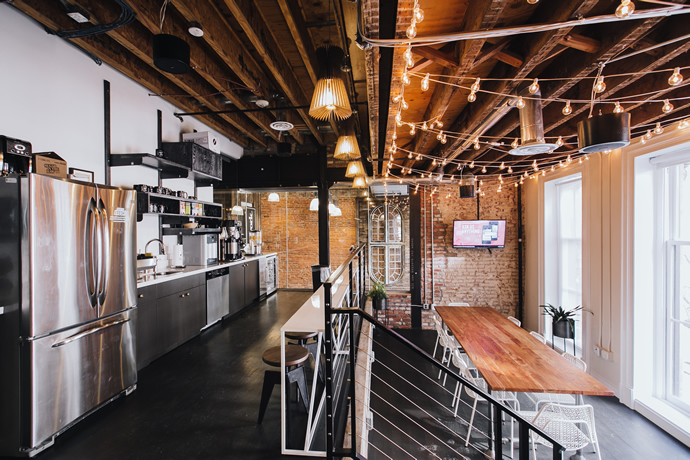
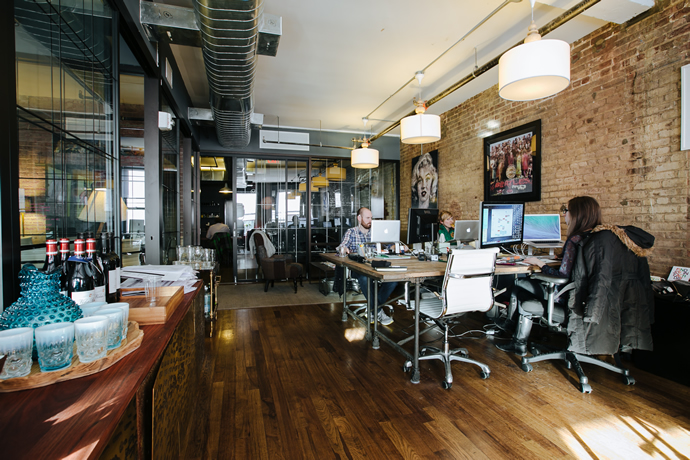
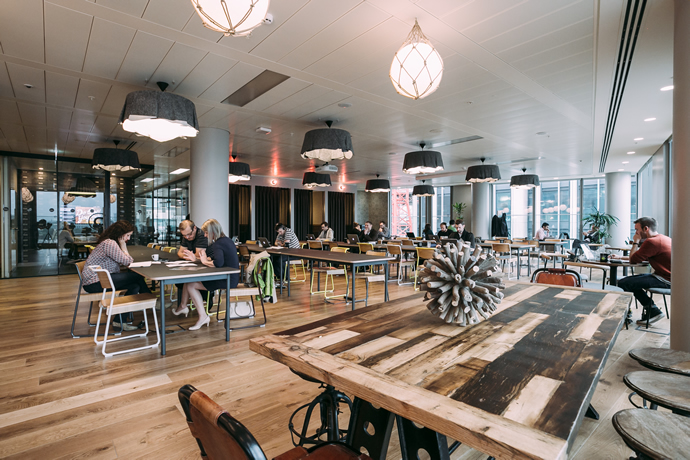
“Our workplace strategists collected a wealth of information and crafted a plan that addresses three things we found our workforce values most — connection, choice and agility,” said Greg O’Brien, JLL’s Americas CEO, highlighting three qualities valued by freelancers that in this instance presumably would keep JLL staff loyal instead of playing the field.
“Our workplace is about giving employees choices and helping them connect,” said Ed Nolan, senior vice president for workplace strategy at JLL. ” Our employees need to be less tethered and more agile. With flexible workstations, leading-edge conference room technology and welcoming café spaces, we’re providing settings that will energize our employees and support their productivity and health.”
Gallup research has shown that companies that successfully connect and engage employees yield almost 150 percent higher earnings per share compared to their peers. “What’s more, companies that actively develop their culture return 516 percent higher revenue and 755 percent higher income,” says JLL, citing management expert John Kotter. (For more about JLL’s effort, visit OfficeRenew.com.)
Creative Workspace, Meet Creative Workers
If there’s one place inclined to welcome imagineering to the office, it’s Southern California. And there’s no shortage of co-work projects there.
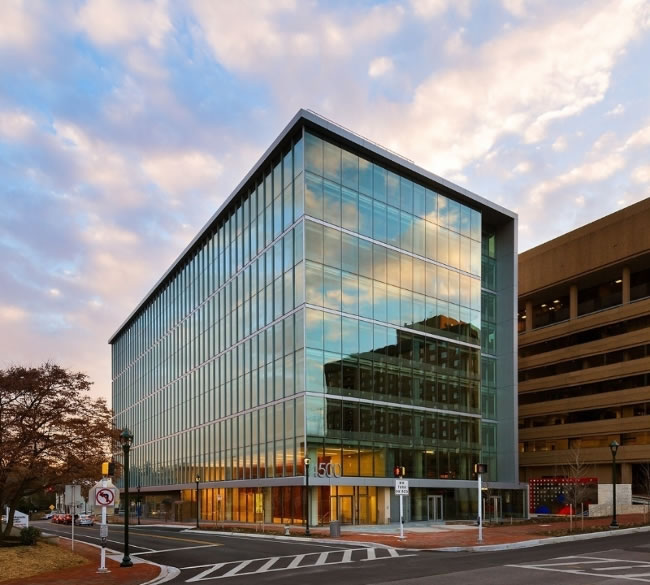
Last month, developer J.J. Snyder Company completed construction on a new creative campus in Los Angeles called Hollywood 959, designed by Ware Malcomb. “Hollywood 959 is a collaborative campus environment for creative tenants,” said Ware Malcomb Principal Radwan Madani. The project caters to users of office, production, post-production, and editing facilities, and sits within 15 minutes of numerous Hollywood studios and world famous venues, as well as multiple industry vendors.
The campus includes large outdoor gathering areas, a two-story wing with exposed barrel truss and colored operable windows, opportunity for screening room(s), and wifi in outdoor areas. “Large, flexible floor plates allow for multiple office plan arrangements and sizing,” said Ware Malcomb, “including the opportunity for exterior circulation along window line, while the multifunctional courtyard space can be used for events, screenings, and an alternative work environment.”
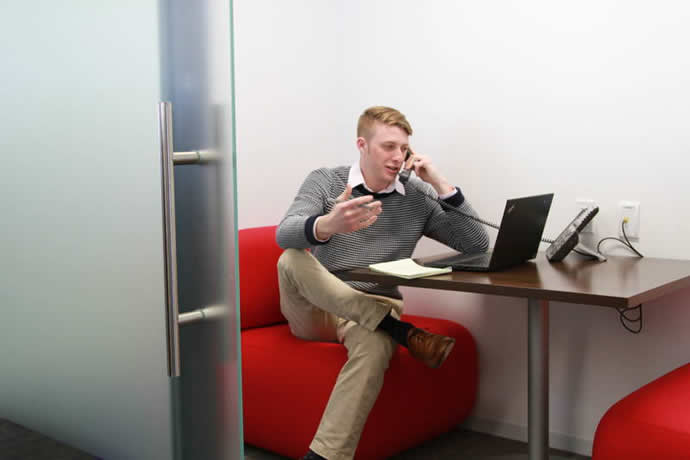
And because the etymology of “company” means “with bread,” there’s another element common to all co-working campuses: a 4,300-sq.-ft. on-site commissary with additional space for outdoor eating/lounging.
In Costa Mesa, Kearny Real Estate has repositioned the former Los Angeles Times printing facility, turning it into a creative office development with 50-ft. ceilings called The Press. Kearny says the 300,000-sq.-ft. facility is divisible to 100,000-sq.-ft. spaces, and also expandable to as much as 700,000 sq. ft.
Kearny closed in November 2015 on a joint venture with Tribune Real Estate Holdings to redevelop the former printing plant and excess land. The 24-acre site sits just a few miles from John Wayne Airport in Orange County. Costa Mesa is currently undergoing a general plan update. “Kearny is guiding the site through the process that includes a zone change and increasing the allowable floor area ratio,” says the developer’s website.
Yet more creative workspace is being created at the former Masonic Temple building in Glendale, owned by Caruso Affiliates. CBRE is calling it “the next step in the evolution of office space,” and like JLL is offering it as a proving ground for its global Workplace360 initiative by occupying four floors itself.

Approximately 125 CBRE employees occupy the space, and that number should double by the time the entire project is completed. And when those employees sit around the office, they really sit around the office — according to the “free address” approach CBRE espouses, staff can work from any desk they like.
Other Places, Other Spaces
The potent combo of redevelopment and co-working is not limited to California.
In the Midtown area of Kansas City, Missouri, a 12-acre project encompasses the former Westport Middle School and Westport High School in the $22-million Westport Commons development, a joint venture of Sustainable Development Partners Kansas City (SDPKC) and Plexpod, which operates another co-working space with a digital technology area in the KC suburb of Lenexa, Kansas.
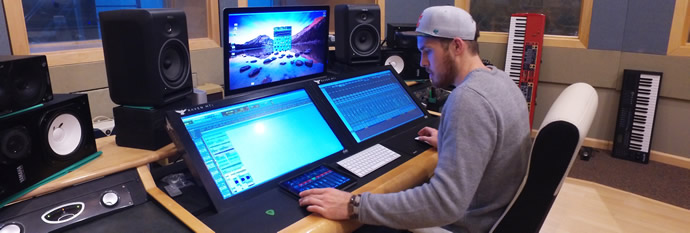
National co-working leader MakeOffices, like WeWork, seems intent on fending off suspicions of 24-hour party people in its sloganeering, calling its product “Coworking For People Who Get Stuff Done.” The Metro Washington, DC–based company in February entered the Chicago market with two locations — at River North Point at 350 North Orleans, the company will open an approximately 45,000-sq.-ft. space featuring 145 private offices, 112 open desks, 11 conference rooms, 10 private call rooms, a 50-person training area and a 4,500-sq.-ft. hub that doubles as a 200-person event space. At One North State in the central Loop area of downtown, MakeOffices will eventually offer a three-floor, 75,000-sq.-ft. location.
“A quick perusal of Deskpass.com, which offers a monthly membership to a network of different co-working companies in Chicago, illustrates the staggering amount and variety of co-working spaces in city,” said a March 2016 report from Chicago-based MB Real Estate. “In 2015, there were announcements of 304,114 square feet of co-working spaces leased in Chicago’s Central Business District. In the first two months of 2016 there has already been at least 187,649 square feet of space leased for co-working in the Central Business District.”
“Chicago has emerged as a strong innovation hub with a world-class startup ecosystem and a rich talent pool, making it a natural city for MakeOffices expansion,” said MakeOffices CEO Raymond Rahbar. As of February, the company operated eight locations across Chicago, Philadelphia, and the Washington, DC, metro area, with nine more under construction.
Five of MakeOffices’ locations are in Greater Washington, DC, but the nation’s capital — like the spaces themselves — doesn’t exclusively belong to one co-working franchise. Also in February, Rye, New York–based Serendipity Labs Coworking announced a lease with Carr Properties for 19,000 sq. ft. near the Bethesda Metro Center rapid transit station in Maryland. It’s the company’s eighth location, as it shoots for an upscale user base with such amenities as a members-only Tesla test drive and highly secure workspaces to accommodate individual professionals in financial services and healthcare. The company’s portfolio includes urban and suburban locations in New York, Connecticut, Northern New Jersey, Florida and Chicago.
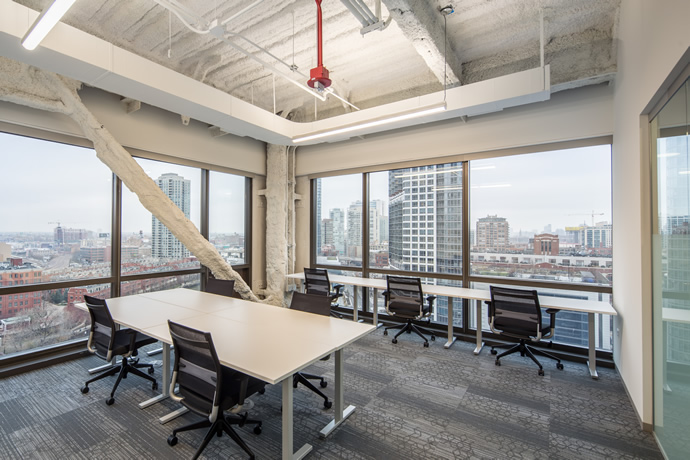
“Coworking isn’t just for startup teams and millennials anymore,” said John Arenas, CEO of Serendipity Labs, at the Bethesda lease announcement. “Our brand attracts mobile, independent professionals from companies of all sizes, stages and industries. Although 20 percent of our members are startups, 35 percent are independent and about 45 percent are trusted employees of established companies.” A growing number of employers, he said, are offering workplace memberships to attract and retain high caliber employees who are demanding more flexibility. “Another striking difference from other coworking is that over 40 percent of Serendipity Labs’ members are women, more than double the industry average.”
Another coworking developer in the DC area is Servcorp (slogan: coworking for grownups), which also has locations in San Francisco, Chicago, Tysons Corner (Virginia), Boston, New York City, Los Angeles, Dallas, Atlanta, Philadelphia, Irvine (California), Houston, Miami and New York, where the company is pursuing its latest growth spurt: the entire 85th floor at One World Trade Center.
Where Do We Go Now?
What to make of the plethora of choices in coworking and flexible office space? JLL and CBRE are not alone in offering thought leadership that might lead to business. Experts at DTZ/Cushman & Wakefield last September published a follow-up to their 2015 “Coworking Revolution” report with “How You Work: People, Places & Flexible Workspaces.”
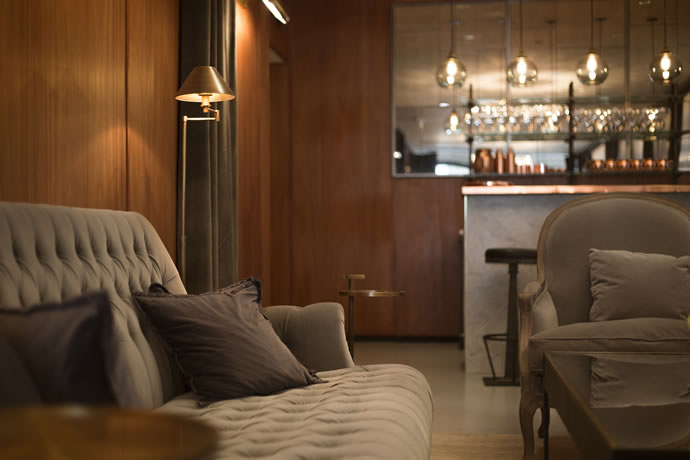
The report notes the role such spaces have played in urban regeneration, “demonstrated by Kings Cross in London, Dumbo Heights in Brooklyn, Factory Berlin and Fuxing Plaza in Shanghai.” It also traces the real impetus behind the co-working revolution: the 2008 global financial crisis, which made many a worker into a sudden freelancer. As it happened, even as GDP declined in major markets between 2008 and 2009, “remarkably, the amount of early-stage businesses grew by 23 percent, particularly in digital, media and technology sectors where low barriers to entry proved a perfect ground for unexpected entrepreneurs,” says the report.
Among the report’s other findings and predictions:
- Corporates and other users will benefit by balancing a low-cost environment with a competitive ability to increase employee flexibility.
- Talent pools in fringe locations supported by Flexible Office providers will attract inward investment and increase value. Developers will respond by creating new spaces as part of the wider place-making and regeneration agenda.
- Global operators will expand their offers and coverage, while new local operators will emerge especially in fast growing cities in Asia.
- The bright line separating flexible office space from co-working space will continue to blur, as entrepreneurs looking for stability and corporations looking for flexible spaces for their talent continue to intermingle.
That last point is nowhere more evident than at the 16,000-sq.-m. (172,230-sq.-ft.) “stage-agnostic accelerator” Factory Berlin.
“Factory hosts some of the world’s largest technology brands including Twitter, SoundCloud, Uber, Zendesk and Google Campus Berlin alongside some of the smallest,” said the report. “By having several established companies in the campus, 85 percent of people who work in Factory are employees rather than freelancers, dispelling the view that Coworking applies to the one-man-band alone. Founder Simon Schaefer in fact broke the mold with a Coworking model that accommodates both startups and multinational companies together, and the results have been exemplary.”
“Artists and bohemians have been flocking to Berlin since the wall came down in 1989,” observed Sophy Moffat of DTZ (now Cushman & Wakefield) in London. “Affordable rents and vacant spaces allowed room for experimentation, as diversity in numbers created a dynamic infrastructure for cultural exchange. Today, coworking spaces are helping advance this infrastructure by creating vibrant environments for startups and established companies alike.”


